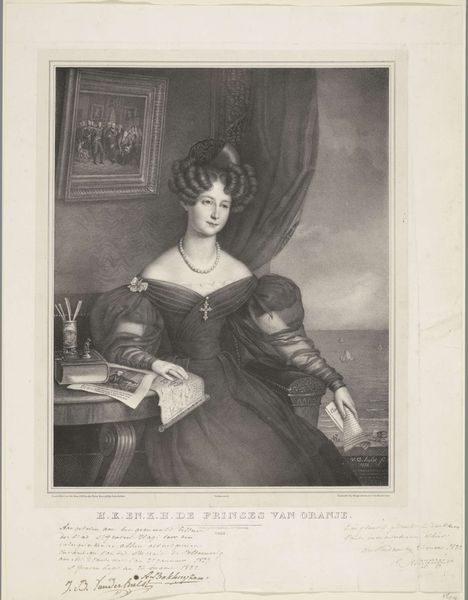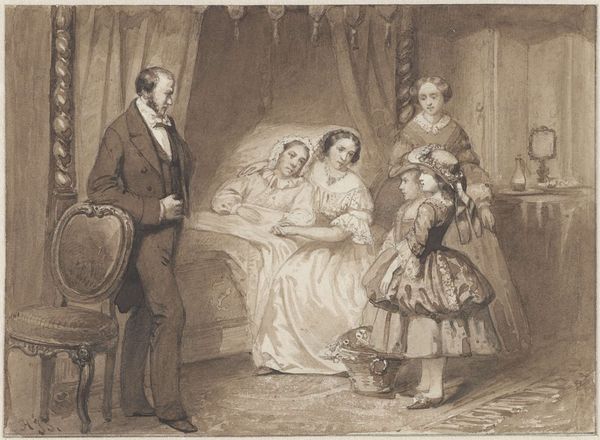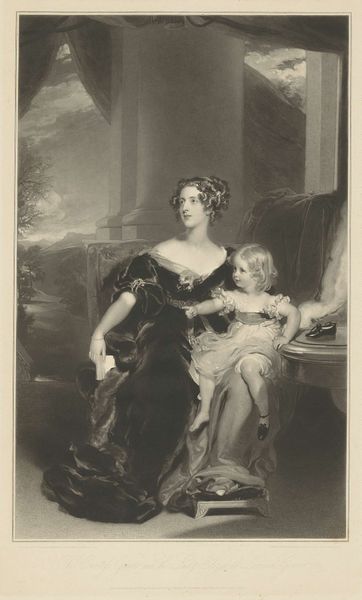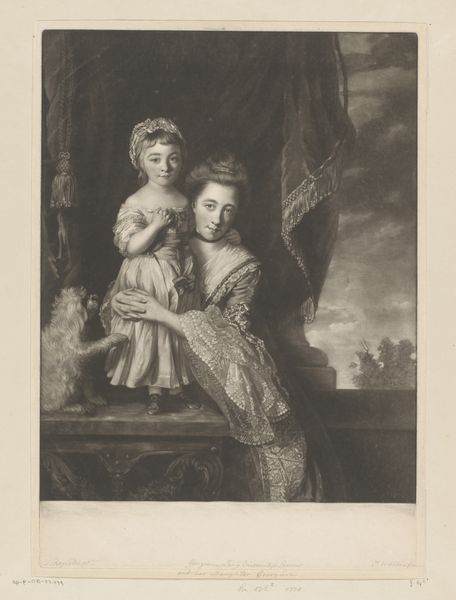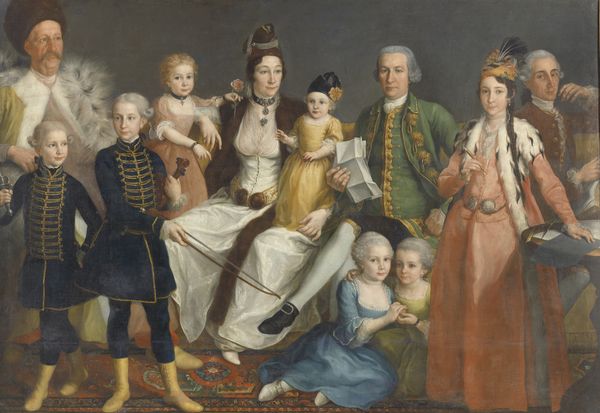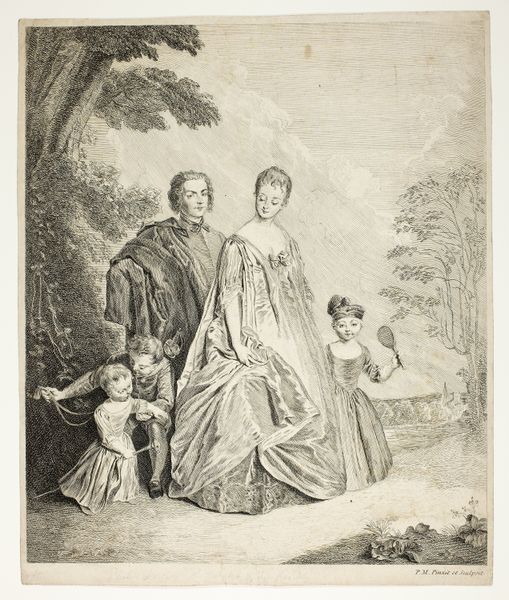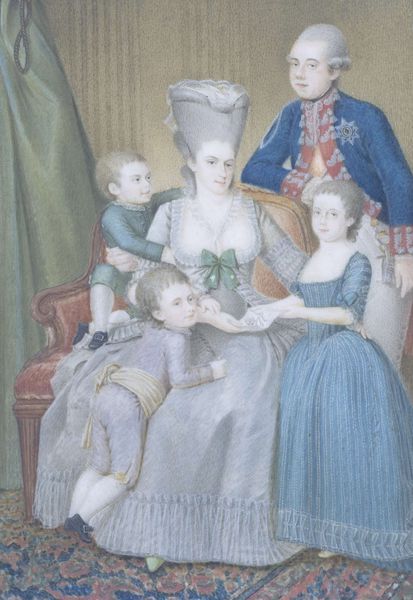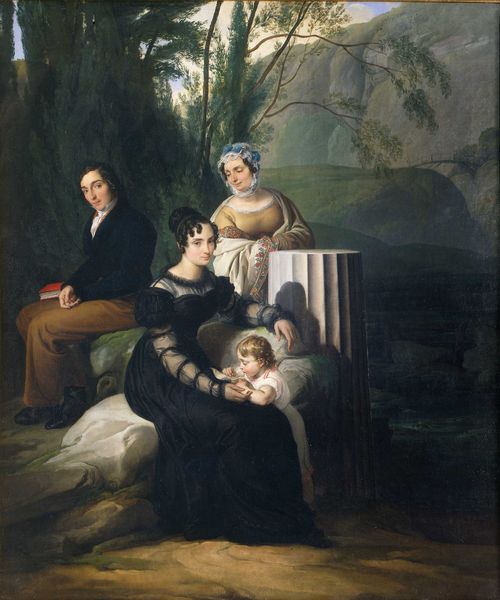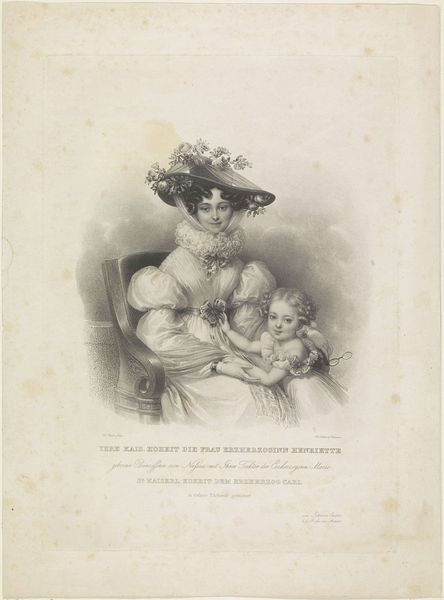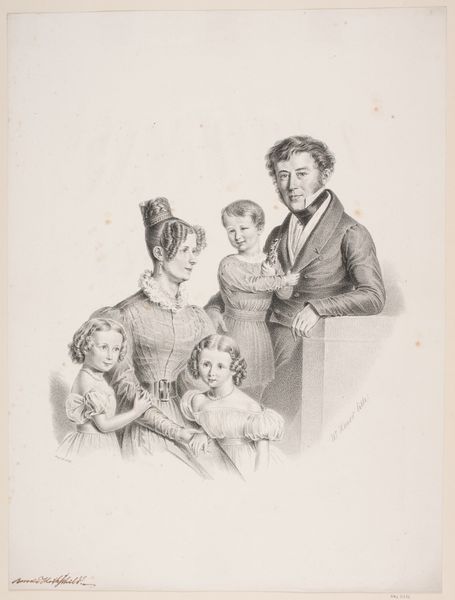
Familieportret van Willem II, koning der Nederlanden, Anna Paulowna Romanowa en hun kinderen 1850 - 1930
0:00
0:00
photography
#
portrait
#
16_19th-century
#
neoclassicism
#
photography
#
historical photography
#
group-portraits
#
19th century
#
history-painting
#
realism
Dimensions: height 133 mm, width 205 mm
Copyright: Rijks Museum: Open Domain
Curator: Looking at this photographic “Familieportret van Willem II, koning der Nederlanden, Anna Paulowna Romanowa en hun kinderen,” which the Rijksmuseum dates rather broadly between 1850 and 1930, what strikes you? Editor: Well, for one, it's striking to see photography used for a royal family portrait so early on. It feels…staged, definitely not as spontaneous as a modern photograph. I guess it’s the very structured nature of the pose and how serious they all look. What do you see? Curator: I see the materials of power and status carefully deployed. Look at the labor involved – consider the tailor who crafted Willem’s ornate military jacket. Photography at this time was also not just about pointing and shooting, it needed time and preparation. Editor: True, think about the sitting process. Everyone having to stay still. Were photographs for portraits a signifier of luxury? Curator: Exactly. Consider the socio-economic implications: only those who could afford the time and expense could commission such a portrait. The reproducibility of photography hadn't yet eroded its exclusivity entirely. And look at their clothes! How much did each uniform or each dress cost, who manufactured the materials that made the family’s image possible, who assembled them, and under what conditions did the laborers work to do so? Editor: That shifts my perspective. It's less about a sentimental family moment and more about the deliberate construction of an image reflecting wealth and dynastic power. Curator: Precisely! It pushes us to think about the conditions of both production and consumption, unveiling how art objects become embedded within wider socio-economic frameworks. Editor: So it's like unpacking all the invisible layers behind a seemingly straightforward family portrait. Thanks for opening my eyes! Curator: My pleasure! The material world holds many stories if we know how to look closely at it.
Comments
No comments
Be the first to comment and join the conversation on the ultimate creative platform.

